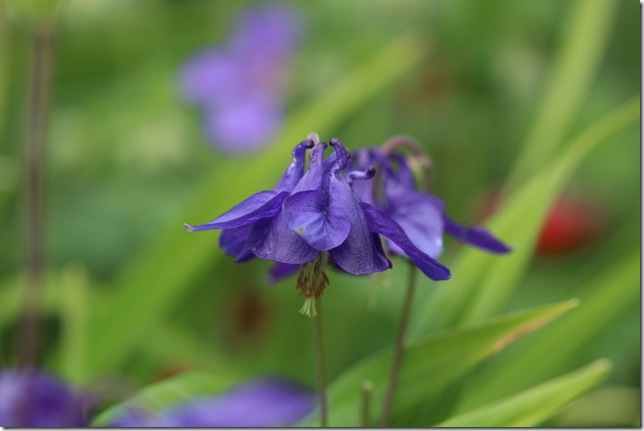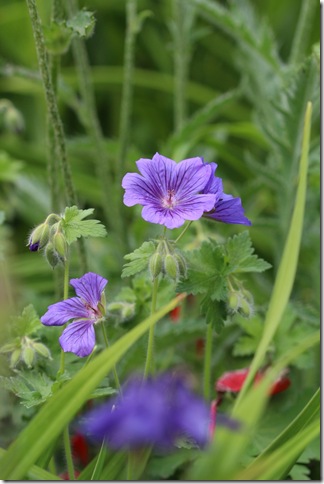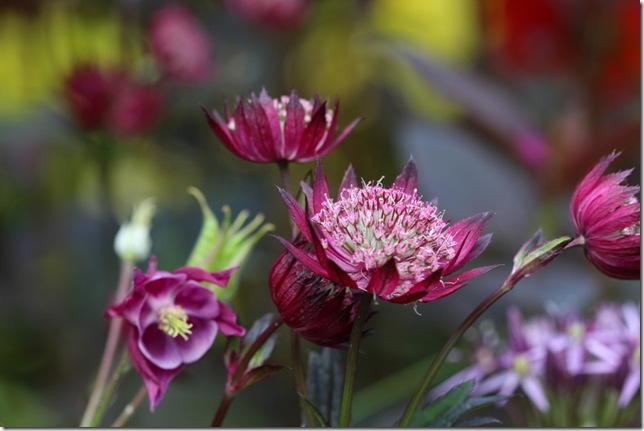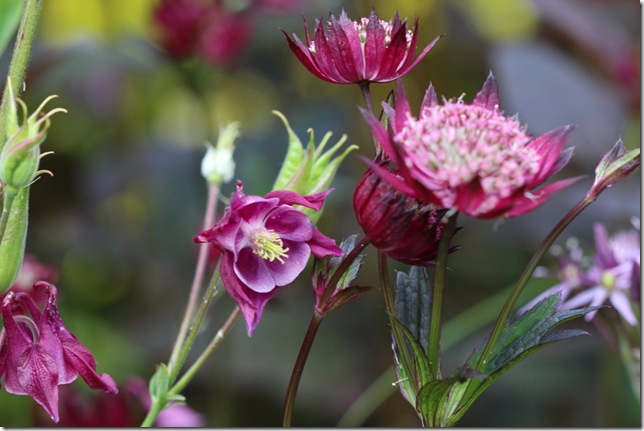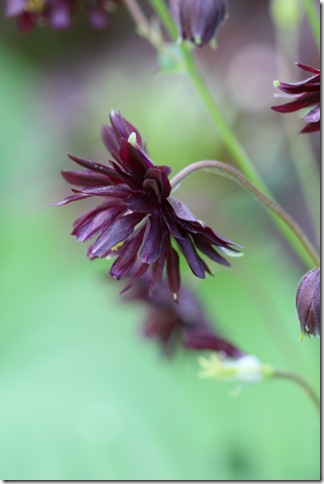Wednesday, June 20, 2012
Wednesday, June 13, 2012
Thursday, June 07, 2012
She bangs the drum - a review of the Bad-Tempered Gardener by Anne Wareham
OK, so this book has been around for a while, but I happened to notice it in the library a couple of weeks ago (sorry, Anne – no sales income from me). Anne has made herself a niche in the gardening press as the self-styled bad-tempered gardener, and so I was expecting some rather bad-tempered rants in this book. Fortunately, perhaps, for my blood pressure, she comes across more as an irritated (and sometimes irritating) gardener. A self-made square peg in a round hole.
The structure of the book is in short chapters of a couple of pages or so; incidentally a very useful structure when I have to keep putting the book down to do baby-related things. For those who follow Anne on Twitter, some of the chapters, and the recurring themes, read rather like expanded versions of her tweets. Typically, these cover: the mediocrity of gardens opening for the NGS; gardens being featured in magazines in a highly selective fashion; uncritical views of gardens visited by media. I’m certainly not saying that these are not valid points. I don’t know how the garden media works, and it does seem odd that a garden can be awarded a ‘Garden of the year Award’ by viewing some selective photographs. One could argue that it is only the view of one magazine that this is the garden of the year so what is the big deal? But I suppose it has a substantial(ish) readership and such an award increases visitor numbers and so income for that garden.
I think Anne is rather harsh on plantsmen (plantsperson?)/plantaholics. Not everyone gardens for design effect, and many people garden (and I would imagine go to visit gardens) to see a wide variety of plants. This may give a garden an unsettled overall look/feel but perhaps it is what many people want. I can understand their point of view as I was, until quite recently, very like that. Now, my feelings towards my garden have changed. I look at it now and see it as too ‘bitty’ – too many plants, not enough statement. It’s something I’m gradually trying to change, and so Anne’s comments upon buying/propagating many plants of one type for mass planting for effect ring very true to me. But, although I now realise the unifying power of mass planting in a garden, it doesn’t mean that I can’t still enjoy a plantaholic’s garden. I just get something different out of each.
Anne exhorts us, and the garden media, to be more critical of the gardens we visit. She was instrumental in setting up and running ThinkinGardens, an organisation encouraging us to explore the role of gardens. I suppose how you feel about analysing gardens depends on what you think a garden is for, and why you go garden visiting. Since coming across ThinkinGardens and Anne, I have tried to look a little deeper at gardens I visit. Not entirely successfully – I haven’t expunged the “oh look – pretty flower” habit from my view of gardens (and nor would I want to, completely!), and I’m not sure that I have the mental toolbox to look at gardens from a critical point of view as Anne wants us to. I can look and see whether the garden is well tended, I can, to a certain extent, admire planting combinations, colour and form – what works well and not so well from my own point of view. I’m not so well equipped to critically analyse from an artistic point of view as a critic would in an art gallery or at a theatre. Anne seems to want us to approach a garden open to the public as we would a gallery. Most people approach a garden, especially one open under the NGS as an opportunity for a nosey around and for some homemade cake. Perhaps Anne is right to some extent, but how many people wander round an art gallery to really analyse the paintings, to try to understand the symbolism of the items in the painting? I think a lot of people will go to the National Gallery and be as keen on visiting the cafe as they are on seeing the Turner exhibition. Cake is not available at Veddw.
Talking of the Veddw, it is here where the real passion in the book shines through. Anne talks in detail about the development of her and Charles’ garden over the years, and the sheer hard work that went into it. I wouldn’t like to judge a garden solely from the photographs I’ve seen if it ;-) but Veddw certainly looks very good. Anne talks about her struggle to understand the alien landscape of the area, and how she could reflect this in the garden. The garden therefore reflects its environment (is this what they call the genius loci?), and the history of that environment. Her views on certain plants are interesting, and often entertaining; rampant plants are welcomed, as a means of covering ground – great if you have a large garden, but I’m not sure I’d welcome ground elder into my domain. The reflecting pool and hedge garden look gorgeous (in the photos…), but please, Anne – I didn’t need to know the gory details of what you have done there!!! Pass the mind bleach…
Bad-tempered? Occasionally. Entertaining? Mostly. Thought-provoking? Certainly.
(Title of the post inspired by the Stone Roses. Incidentally, Anne is not keen on roses. Not at all).
Wednesday, June 06, 2012
Monday, June 04, 2012
Morphic resonance
No, nothing to do with plasticine figures. Morphic resonance was a phrase invented by scientist and author Rupert Sheldrake. He described it as “…the basis of memory in nature....the idea of mysterious telepathy-type interconnections between organisms and of collective memories within species." A bit wacky, really.
I think Sheldrake was more concerned with this in animals, but I think I’ve found evidence of it in plants. I must have bought an aquilegia at some point, as the garden just contained lollipopped shrubs when we first moved here. Since then, the aquilegia (notoriously promiscuous) has seeded itself around the garden. I think the original may have been a dark-coloured double – frilly knicker style.
Now, this original has spawned a range of plants which have seeded themselves around the back, and now front, garden. Strangely, though, the plants have come up in sympathy to the surrounding flowers – not due to any weeding out by me.
So, we have…
Blue next to a blue geranium
Red next to a red Astrantia and in front of the purple of Lysimachia ciliata ‘Firecracker’
Lilac and Allium christophii
Frilly pink in front of the pink-branched Acer palmatum ‘Sango-kaku’
Frilly purple in front of a purple-leaved Acer (and a self-seeded Allium christophii – but more on those in a later post).
Spooky!



